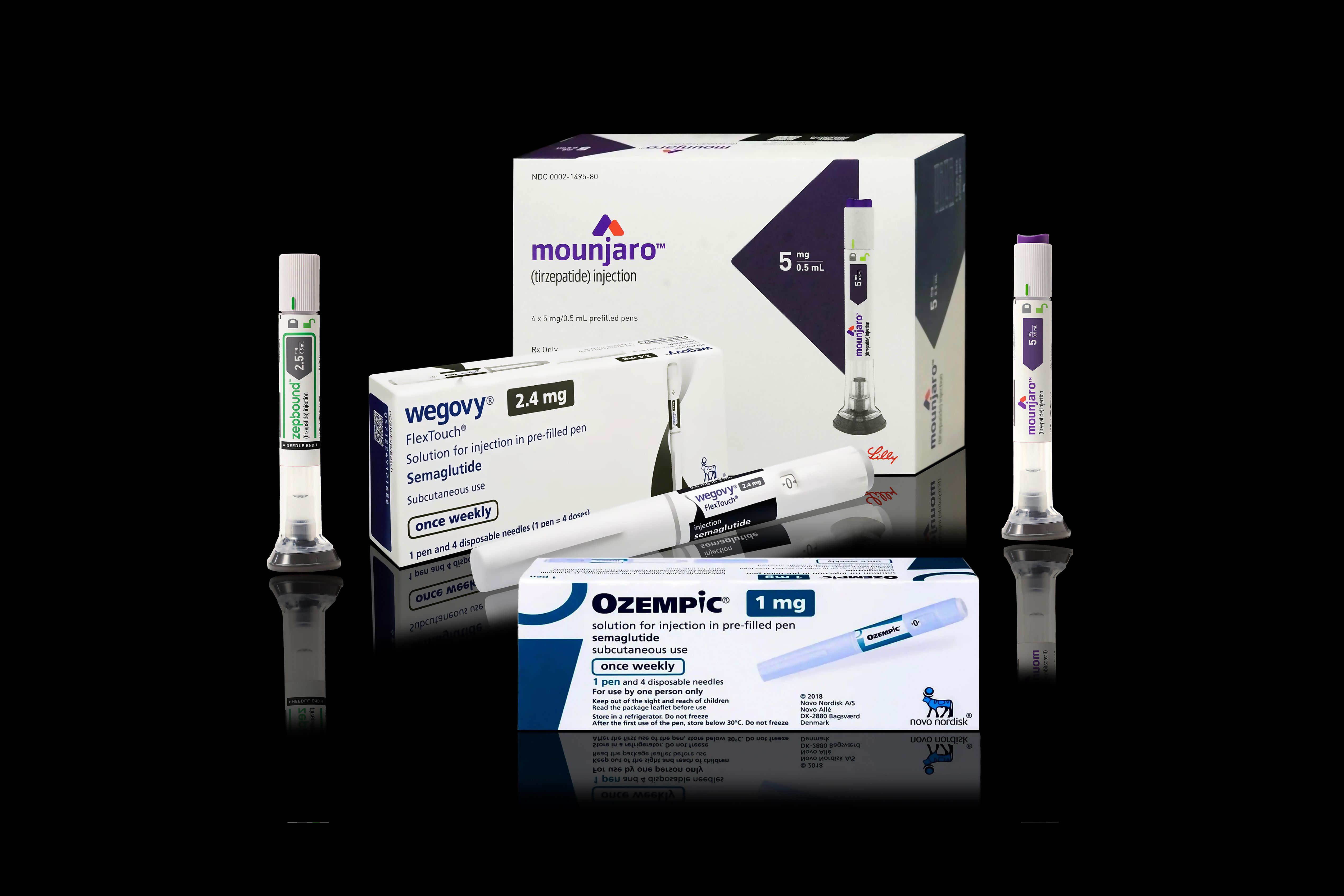- Center on Health Equity & Access
- Clinical
- Health Care Cost
- Health Care Delivery
- Insurance
- Policy
- Technology
- Value-Based Care
EASO Recommends Semaglutide, Tirzepatide for First-Line Obesity Therapy
The European Association for the Study of Obesity now recommends the 2 treatments for obesity and most associated complications.
Semaglutide and tirzepatide should be considered the first-choice pharmacologic treatments for individuals living with obesity and most related complications, according to a new framework from the European Association for the Study of Obesity (EASO) published in Nature Medicine.1
According to an EASO news release, these new recommendations reflect the strong clinical trial evidence for glucagon-like peptide 1 (GLP-1) receptor agonists such as semaglutide and dual gastric inhibitory polypeptide (GIP)/GLP-1 receptor agonists such as tirzepatide.2 Both agents have demonstrated significant efficacy in promoting weight loss and improving obesity-related complications compared with earlier medications.
Semaglutide is commonly manufactured by Novo Nordisk under brand names Ozempic, Wegovy, and Rybelsus; tirzepatide is manufactured by Eli Lilly under brand names Mounjaro and Zepbound. Almost all the researchers reported financial relationships with at least 1 of these manufacturers.1
A Complications-Guided Algorithm
Rather than focusing solely on weight loss, the EASO algorithm prioritizes the presence or absence of complications.
“The management of obesity should not be limited to weight loss alone but should instead adopt a holistic approach that includes the prevention, resolution or improvement of complications, enhanced mental well-being, physical fitness, social functioning, and overall health and quality of life,” the researchers said. They explained that the treatment algorithm was developed using a “synthesis of scientific evidence” available up until January 31, 2025.
Almost all authors reported financial relationships with at least 1 of the manufacturers. | Image credit: Ole – stock.adobe.com

Researchers assessed available medications on 3 criteria: their ability to promote total body weight loss, their impact on specific complications, and their safety profile. While several drugs are available—including liraglutide, naltrexone–bupropion, and phentermine–topiramate—the evidence base consistently favored semaglutide and tirzepatide for both weight reduction and complication management. According to the authors, these should be the first choice in almost all cases.
Recommendations Across Conditions
The authors separated complications into 2 conceptual categories: fat mass disease (mechanical complications from excess weight) and sick fat disease (metabolic or immunologic complications). For fat mass diseases, EASO recommends tirzepatide as the first-line treatment for individuals with obesity and obstructive sleep apnea, based on randomized trial evidence, while semaglutide is preferred for those with knee osteoarthritis due to demonstrated reductions in pain.
For sick fat diseases, EASO recommends semaglutide and tirzepatide as first-line therapies for people with obesity and prediabetes or type 2 diabetes. Semaglutide is recommended for those with established cardiovascular disease due to evidence of reduced major adverse cardiovascular events. For heart failure, current data are limited but suggest either medication may be appropriate. Tirzepatide is also recommended in metabolic dysfunction–associated steatotic liver disease, but evidence from the phase 3 ESSENCE trial—published after the cutoff date of January 31, 2025, so it was not included in the current algorithm—indicates semaglutide may soon join as a first-line option.3
When lesser weight loss goals are appropriate, other medications such as liraglutide or naltrexone–bupropion may be considered, but the guidance underscores that incretin-based therapies are now the cornerstone of pharmacologic care.1
Balancing Costs and Policy Implications
The framework also acknowledges the economic complexity of widespread incretin use, with costs varying across health systems. However, the authors argue that the long-term consequences of untreated obesity—including cardiovascular disease, diabetes, liver disease, and other complications—must be weighed equally in policy and payer decision-making.
“In this context, the cost of not treating obesity and adipose tissue dysfunction at early stages—thus enabling the progression to complications and end-organ damage—should be weighed equally in health policy and clinical decision-making,” the authors said.
They also emphasized that pharmacologic care must be tailored to each patient, requiring consideration not only of clinical factors—the degree of adiposity, complications, comorbidities, and concurrent therapies—but also of social and personal elements, including socioeconomic circumstances, patient values, expectations, and goals.
“Although no treatment algorithm can replace the nuanced clinical judgment required for such comprehensive assessments, this tool can serve to support therapeutic decision-making in obesity,” the authors said. “Given the rapid advances in the field of medications, EASO intends to update the present treatment algorithm regularly to incorporate the latest available evidence.”
References
- McGowan B, Ciudin A, Baker JL, et al. Framework for the pharmacological treatment of obesity and its complications from the European Association for the Study of Obesity (EASO). Nat Med. Published online October 2, 2025. doi:10.1038/s41591-025-03765-w
- Semaglutide and tirzepatide recommended as first-line treatment of obesity and most of its complications in new guidance from European Association for the Study of Obesity (EASO). News release. EASO. October 2, 2025. Accessed October 2, 2025. https://easo.org/semaglutide-and-tirzepatide-recommended-as-first-line-treatment-of-obesity-and-most-of-its-complications-in-new-guidance-from-european-association-for-the-study-of-obesity-easo/
- Sanyal AJ, Newsome PN, Kliers I, et al. Phase 3 trial of semaglutide in metabolic dysfunction-associated steatohepatitis. N Engl J Med. 2025;392(21):2089-2099. doi:10.1056/NEJMoa2413258
GLP-1 Receptor Agonists: Trend, Necessity, or Blessing?
December 8th 2025Glucagon-like peptide 1 (GLP-1) receptor agonists offer promise in weight and cardiovascular risk reduction, but their use must complement—not replace—lifestyle interventions within a holistic, patient-centered care model.
Read More
